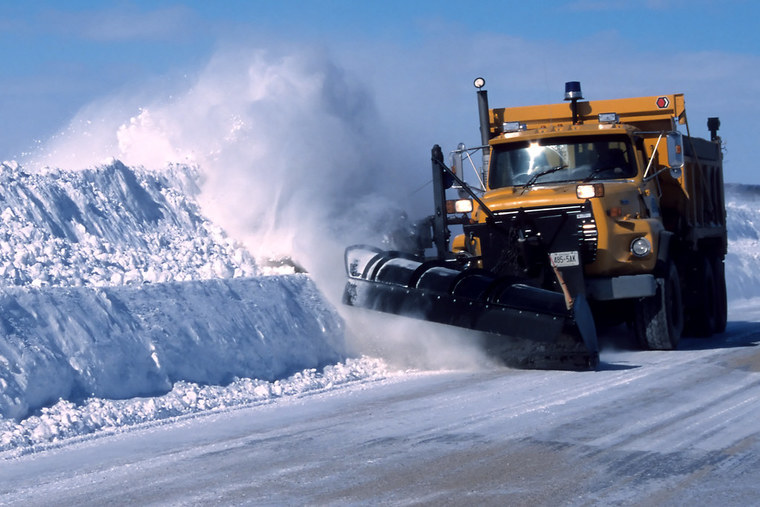Back in March of last year, the epic snowfall enjoyed by skiers throughout the Sierra Nevada region was sullied when a snowstorm in the Lake Tahoe area turned tragic. 61-year-old Alan McMahon was heading north on Mount Rose Highway, driving to a worksite near Incline Village, a small community on the Nevada side of Lake Tahoe. Visibility was diminished, but McMahon was a careful driver and an attentive worker. He worked hard, relying on own labor to earn a living as a carpenter in the Northern Nevada area. McMahon was driving his beloved 1978 Chevy pickup truck. [1]
A snow plow was clearing the roadway on the opposite side of the street. Suddenly, a vehicle attached to the snow plow, which was traveling in the southbound lane, veered over the center line and collided with McMahon’s truck before he was able to react and avoid the crash. The blow hit the front of McMahon’s Chevy truck, and the force of the impact destroyed the suspension of the old vehicle. A component of the suspension known as a “leaf spring” shot through the floorboards and straight into McMahon’s left foot. The foot was nearly severed at the ankle as a result of the accident. Doctors were able to reattach McMahon’s ailing appendage, but his mobility and productivity are expected to remain severely limited for the remainder of his life. His career as a carpenter was over, but his battle with the State of Nevada had only begun. [2]
The snow plow that hit McMahon just over one year ago was driven by a Nevada state employee named Eric Christiansen. Christiansen was high on methamphetamines at the time of the accident, and he had failed to install chains on his snow plow, despite severe winter storm weather conditions and State-mandated chain controls in effect on the Mount Rose Highway at the time. These two factors, combined with the inclement weather conditions, meant that Christiansen was unable to control the trajectory of his snow plow, ultimately allowing it to cross over the center line and into oncoming traffic. [3]
According to reports, Christiansen was high on methamphetamines at the time of the accident, which undoubtedly contributed to his being unable to control his vehicle on the road. Methamphetamine is a highly addictive stimulant drug. It is found around the world and can be smoked, snorted, injected, or swallowed. Its use from a global perspective has increased over the last several years. Repeated use of methamphetamine can result in paranoia, hallucinations, delusions, anxiety, and mood swings. Looking at data from California over the five-year period of 1989-1994, researchers found that accidents related to methamphetamine use increased significantly over this period of half a decade, and use of the drug was commonly associated with car accidents. Researchers noticed a strong resemblance to the sorts of injuries related to alcohol use. [4] Much as we would hold a drunk driver accountable for his actions on the roadway, a driver who is high on methamphetamines should also be recognized as putting other drivers and civilians at risk or injury or death.
While it is true that Christiansen was required to have chains on his snow plow on the day of the accident (but failed to comply with this requirement), there is some debate as to whether this omission contributed in any substantial way to the accident that day. While designs and durability can vary, at a basic level tire chains are webs of cables or chains that fit over the tires of a car or truck. Many drivers try to avoid using chains, because they can be expensive – as many Reno drivers caught in snowy conditions while returning from a trip to California can attest, this is especially so if you find yourself under chain regulations without any pre-purchased chains in your trunk and have to pay exorbitantly to purchase them at the last minute.
Many drivers are also uncomfortable with installing tire chains in snowy weather, as this process requires the driver to exit the vehicle several times to line the chains up and fasten them to the tires. Once installed, tire chains increase traction on snow or ice, allowing cars to travel where they otherwise could not. Tire chains should only be used when you are driving in deep snow and ice, and they should be removed as soon as you exit these extreme driving conditions. [5] Although chains are required on many western mountain highways during snowy winters, some think that this requirement is unnecessary. Tire chains can be hard to drive with and, once installed, they are really only helpful on rural roads with several inches of snow (not plowed, paved highways). [6] In today’s go-go world, many drivers also chafe at the need to keep their speed low when tire chains are installed.
Whatever the true cause of the accident, one fact remains certain: McMahon’s career as a hard-working carpenter came to an end last March. He is unable to continue in his profitable career due to an injury sustained by a collision with an employee of the State of Nevada. Ultimately, Christiansen was found guilty of a felony DUI and faces a sentence of up to 20 years in prison. McMahon will be compensated for his loss, but not as generously as one might guess. This crash took place in Nevada, just five miles from the California border. A State worker caused the injury in this case while performing his duties, so damages would be sought against the State of Nevada. A Nevada law limits how much victims can receive from the State in an accident in which the State is held liable. While McMahon may have been eligible to receive at least $1,000,000 in damages had the accident occurred in California, in Nevada, he can receive no more than $100,000. [7]
This is a tragic case, and one in which Nevada law clearly adds insult to injury for McMahon. He is out of work, forced into early retirement, and his small payout will do little to soften the blow.
[1] https://www.rgj.com/story/news/2019/04/17/nevada-snowplow-accident
[2] https://www.rgj.com/story/news/2019/04/17/nevada-snowplow-accident
[3] https://www.rgj.com/story/news/2019/04/17/nevada-snowplow-accident
[4] https://www.ncbi.nlm.nih.gov/pmc/articles/PMC1448174
[5] https://www.libertymutual.com/masterthis/snow-chains-and-tires
[6] https://www.boston.com/cars/news-and-reviews/2015/12/10/tire-chains
[7] https://www.rgj.com/story/news/2019/04/17/nevada-snowplow-accident
Image Credit: Jeroen Kransen on Flickr


